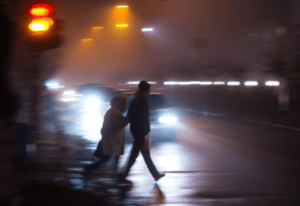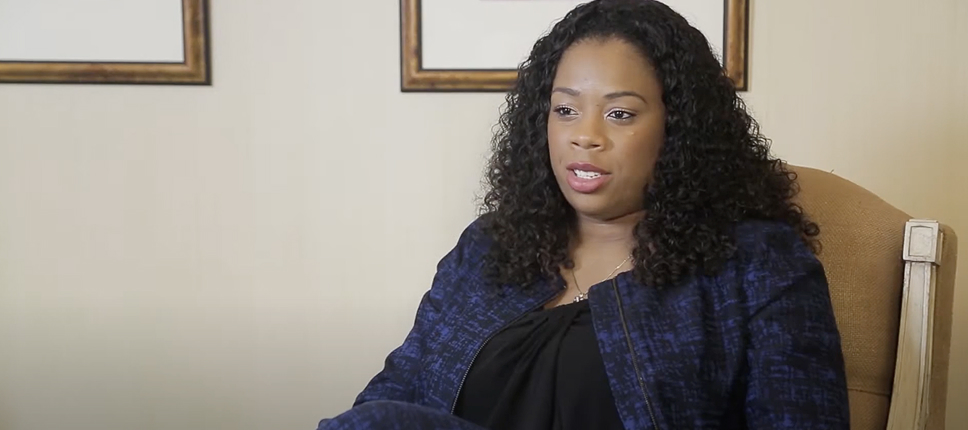Appearing On:
















Serious injuries deserve experienced attorneys

Pedestrians in Washington, D.C. face serious risks every day—from distracted drivers to poorly maintained crosswalks and traffic signals. At Cohen & Cohen, we represent injured pedestrians with the urgency, skill, and focus these cases demand. Founding attorney Wayne R. Cohen is a nationally recognized trial lawyer who has handled thousands of personal injury cases. Our team has successfully taken on pedestrian accident claims involving severe injuries, disputed liability, and multiple parties. When you work with our Washington DC pedestrian accident law firm, you’re choosing an injury team with deep local knowledge, legal insight, and a strong commitment to results.
Pedestrian Accident Law Firm Washington DC
Unlike collisions involving two vehicles, a pedestrian is completely unprotected at the moment of impact. Even at low speeds, these accidents can result in long-term injuries or permanent disabilities. Drivers often fail to yield at crosswalks, speed through residential areas, or get distracted behind the wheel. As a result, the consequences for pedestrians can be life-altering.
The range of injuries we commonly see includes:
- Fractures, dislocations, and head trauma
- Spinal injuries or internal bleeding
- Road rash, lacerations, and permanent scarring
- Cognitive changes following a traumatic brain injury
Beyond the physical impact, many clients face difficulty returning to work or performing daily tasks. Pain management, physical therapy, and psychological treatment can extend for months or even years. Many families struggle to cover costs while insurance companies try to minimize or delay payment.
These cases also involve unique questions of liability. Was the pedestrian in a crosswalk? Was the driver distracted, speeding, or under the influence? Was visibility poor, or were traffic controls ignored? We investigate the facts thoroughly to build the strongest case possible.
Our Firm’s Focus Is Your Recovery
Our personal injury lawyers bring decades of experience to every case. We’ve seen the long-term impact pedestrian crashes can have and know what’s required to recover full compensation. Whether your claim involves a private automobile, rideshare driver, delivery truck, or public transportation, we tailor our strategy to your situation and goals.
Clients consistently choose us because:
- We manage communication with insurance adjusters and opposing attorneys so you don’t have to
- We gather medical records, eyewitness statements, and expert opinions early in the process
- We’ve recovered millions in verdicts and settlements across personal injury cases
Every pedestrian accident has its own facts, but our commitment is always the same—to provide responsive, knowledgeable, and personalized legal representation throughout.
We’re Ready to Talk When You Are
After a serious pedestrian accident, your next steps matter. If you or someone close to you has been injured, reach out to a team that understands what’s at stake. As a respected Washington DC pedestrian accident law firm, our team is here to help you move forward with confidence. Contact us today for a free consultation. Let’s talk about your options.

Types of Pedestrian Accident Cases We Handle
Pedestrian accidents can happen anywhere—at busy intersections, in residential neighborhoods, or even in parking lots. The people involved are often caught off guard, and the results are usually serious. At Cohen & Cohen, we’ve represented many individuals and families dealing with the consequences of these incidents. As trusted pedestrian accident lawyers, we handle a wide range of personal injury case types, helping clients understand their rights and take meaningful steps toward recovery.
Crosswalk Incidents Involving Failure to Yield
Drivers are legally required to yield to pedestrians in crosswalks, yet failure to do so remains one of the leading causes of pedestrian injury. Whether due to distraction, speeding, or impatience, a driver who fails to stop can cause serious or even fatal harm. We handle cases where pedestrians were hit while crossing legally with a walk signal or in clearly marked crosswalks. These personal injury claims often hinge on gathering traffic cam footage, witness accounts, and traffic signal data.
Accidents in Parking Lots and Driveways
Not all pedestrian injuries occur on busy roadways. Drivers backing out of parking spaces or driveways without checking their surroundings are also responsible for hundreds of injuries every year. These cases often involve vulnerable individuals—children, older adults, or people with limited mobility—who may not be easily seen. We examine parking lot layouts, sight lines, and signage to determine fault and hold responsible parties accountable.
Incidents Involving Distracted or Impaired Driving
Distracted driving—especially texting or using a smartphone—has become a major contributor to pedestrian crashes. So has driving under the influence of drugs or alcohol. We work on cases where the driver’s condition or behavior at the time of the crash clearly played a role. These matters require timely collection of evidence, including toxicology reports, phone records, and witness statements, to prove negligence.
School Zone and Child Injury Cases
Children are often at greater risk when walking near schools, parks, or school bus stops. Drivers are required to follow posted speed limits and exercise additional caution in these areas. When they fail to do so, the consequences can be life-altering for the child and their family. We represent parents pursuing justice in these emotionally charged situations and work with medical experts to calculate future care needs and costs.
Hit-And-Run Pedestrian Collisions
Unfortunately, some drivers flee the scene after striking a pedestrian. In these cases, we assist clients in pursuing compensation through uninsured motorist coverage, security and traffic camera footage, or witness information. A hit-and-run can make an already traumatic situation worse, but we’re experienced in tracking down all potential recovery options.
Let’s Talk About Your Situation
If you or a loved one has been injured while walking, it’s important to speak with a legal team that knows how to handle these personal injury claims from the ground up. As a well-regarded DC pedestrian accident law firm, Cohen & Cohen is ready to help. Contact us today for a free consultation. We’ll review your situation and guide you through what comes next.
6 Steps a Washington DC Pedestrian Accident Law Firm Recommends After a Crash
Getting hit by a vehicle as a pedestrian is overwhelming. In a matter of seconds, you may be left with catastrophic injuries, confusion, and questions about what happens next. Our personal injury attorneys have helped many people who found themselves in this situation—each dealing with pain, insurance calls, and uncertainty about their legal rights. Acting quickly after a pedestrian accident is important for both your health and your potential claim. The steps below provide a reliable place to start.
Prioritize Emergency Medical Attention
Your health comes first. If you’re injured, ask for an ambulance or have someone nearby call 911. Even if your injuries seem minor at first, it’s important to get evaluated by medical professionals. Some issues—like head trauma or internal injuries—may not show symptoms immediately. The medical records also create a formal timeline of your condition, which may be helpful later.
Get a Police Report on Record
After emergency services arrive, make sure a police officer completes an accident report. This report may include details about the driver, statements from witnesses, and the officer’s observations. Ask how to obtain a copy or report number. If law enforcement does not arrive on the scene, file a report yourself as soon as you can. It can be difficult to move your case forward without official documentation of the incident.
Collect Contact and Insurance Details
If you are able to do so—or someone can assist—gather the driver’s name, phone number, license plate, and insurance information. If there were witnesses, get their contact information too. Their version of what happened could prove valuable later. When speaking with anyone involved, stick to the facts and avoid assigning blame or accepting fault.
Take Photos of the Scene and Injuries
Photos can help tell the full story of what happened. If it’s safe, take pictures of your injuries, the vehicle, any crosswalk or signage, traffic lights, and road conditions. These images may help clarify what the driver was doing and where you were at the time of the crash. If you cannot take photos, ask a friend or relative to help document the details soon after the event.
Avoid Early Insurance Conversations
You may receive a call from the driver’s insurance company soon after the accident. Be careful when speaking with any insurer. They may ask for a recorded statement or offer a quick settlement. Don’t accept or sign anything until you’ve spoken with our personal injury lawyer who can explain your rights and the full value of your claim.
Washington DC Pedestrian Accident FAQs
Pedestrian accidents happen suddenly and often result in serious, life-changing injuries. Whether someone is walking to work, crossing a street, or heading home from school, they have the right to expect that drivers will yield and follow the rules. Unfortunately, that doesn’t always happen. When a driver is distracted, speeding, or simply careless, the consequences for someone on foot can be devastating. At our firm, we’ve worked with many injured pedestrians who didn’t know where to turn. Below, we answer some of the most common questions we hear after these kinds of incidents.
Who is at fault when a pedestrian is hit?
Fault in a pedestrian accident typically falls on the driver, especially if they failed to yield at a crosswalk, ran a red light, or were distracted. However, each situation is unique. In some cases, the pedestrian may share a portion of responsibility—such as if they crossed outside a designated crosswalk or entered the street against a signal. That said, drivers are expected to exercise caution, especially in areas with foot traffic. A detailed investigation can reveal if traffic laws were broken and whether the pedestrian had the right-of-way at the time of the crash.
What types of injuries are common in these accidents?
Pedestrian injuries can range from broken bones and head trauma to spinal cord damage and internal bleeding. Unlike passengers in vehicles, pedestrians have no physical protection during a collision. Even a relatively low-speed impact can lead to hospitalization, surgeries, and months of recovery. In more severe cases, a person may be permanently disabled or unable to return to work. Some injuries may not be immediately obvious, which is why it’s important to seek medical attention after any collision involving a vehicle and a person on foot.
Why should someone injured on foot contact a lawyer?
Legal action can help recover the full cost of an injury, including medical expenses, lost income, pain and suffering, and rehabilitation. Many pedestrians who are hurt assume insurance will cover the damages, but these cases are often more complicated than they appear. Fault can be disputed, and insurance companies may try to minimize payouts. Our personal injury lawyer can help protect your rights, gather necessary evidence, and present a strong claim. Without representation, it’s easy for injured pedestrians to feel overwhelmed or pressured into a low settlement.
How does a law firm build a pedestrian injury case?
Our team starts by reviewing the facts of the incident—police reports, witness statements, medical records, and traffic camera footage if available. We work to uncover whether the driver was distracted, speeding, impaired, or otherwise acting negligently. Our legal team communicates with insurance adjusters on your behalf and, if needed, prepare your personal injury case for trial. We understand the physical, emotional, and financial toll these accidents take, and we’re here to support you through the process with straightforward legal guidance.
Who can file a claim after being hit by a car?
Anyone injured in a pedestrian accident caused by someone else’s negligence can typically bring a legal claim. This includes adults, children, tourists, commuters, and joggers—basically, anyone walking or standing in a place they’re legally allowed to be. If a loved one was killed as a result of the accident, immediate family members may be able to file a wrongful death claim. There are time limits for filing, so it’s important to act quickly. Preserving evidence and documenting injuries right away can help strengthen your claim.
Contact Our Pedestrian Injury Lawyer
If you or someone you love was hit by a vehicle while walking in D.C., you deserve a legal team that understands the unique challenges of pedestrian injury claims. At Cohen & Cohen, our attorneys combine courtroom experience with strategic case-building tailored to Washington, D.C. laws and liability standards. Wayne Cohen has earned national recognition for his legal commentary in USA Today, NBC, and The Washington Post, and he leads our personal injury team with the same confidence and compassion he’s known for across the region. Contact our Washington DC pedestrian accident law firm today to schedule a free consultation—there’s no cost unless we recover compensation for you.
Personal Injury Attorneys In:
Washington DC | Maryland | Virginia
“Cohen & Cohen did a great job at recovering a good amount of money for me after my accident. Siri was super informative & responsive. Overall I had a great experience using this firm & they will be my first call if I am ever in an accident again.”
– Charles M.
 Personal Injury Accident
Personal Injury Accident
“I had a very positive experience with Cohen & Cohen and I highly recommend them to anyone who needs their services.”
– John G.
 Tractor Trailer vs Car
Tractor Trailer vs Car
“I would highly recommend Cohen & Cohen. They were awesome on my case. Cohen & Cohen had my best interest at heart at all times.”
– Morgan L.
 Personal Injury Accident
Personal Injury Accident
“My experience at Cohen & Cohen has been great from the beginning until the very end when my case was closed…I would definitely recommend them to family, friends or anyone that has a case with a personal injury accident.”
– Maria M.
Reviews
From Our Valued Clients
Cohen & Cohen has an impeccable client satisfaction rating with hundreds of 5-star reviews. We are among the best-rated firms in D.C., Virginia, and Maryland.

Best Personal Injury Lawyer in DC








Cohen & Cohen Has Been Featured On


















